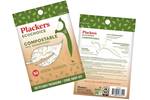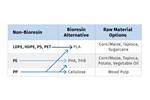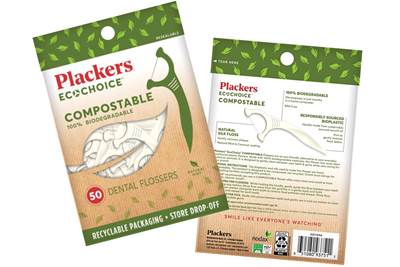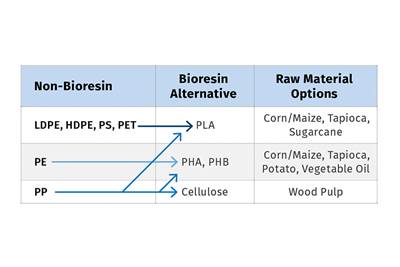PHA Compound Molded into “World’s First” Biodegradable Bottle Closures
Beyond Plastic and partners have created a certified biodegradable PHA compound that can be injection molded into 38-mm closures in a sub 6-second cycle from a multicavity hot runner tool.
Beyond Plastic says its injection-molded PHA bottle caps are the first 100% biodegradable closure. Source: Beyond Plastic
After three years of research including the creation and testing of 174 different compounds, Beyond Plastic LLC, Commerce, California, says it has arrived at a completely biodegradable injection-molded closure based on polyhydroxyalkanoate (PHA), with phase two research looking at compression molding of the bioplastic caps. The PHA resin has been supplied by CJ Biomaterials Inc., a division of South Korea-based CJ CheilJedang. Heading up the project is Fred Pinczuk, Beyond Plastic’s chief technology officer, who has more than four decades of experience in packaging, including stints at major injection molding and blowmolding machinery OEMs.
In his three years at Beyond Plastic, Pinczuk has led that company’s research efforts to commercialize PHA for packaging — largely based on the material’s end-of-life biodegradability. “We don’t want to be in the closure business,” Pinczuk says. “We’re in the business to make formulations that can go mass market, be mass produced and replace petrochemical products currently used.”
Pinczuk acknowledges that bioplastics in general and PHA in particular are not new, but he feels PHA’s properties — and his company’s research — put the material in a new position to replace fossil fuel-based plastics currently used in single-use packaging applications, like closures.
He is also aware of the challenges posed by processing bioplastics, noting that in the early days, the industry didn’t do itself any favors by often positioning bioplastics as drop-in replacements for traditional resins. “In the past, companies made PHA compounds and sold them as having similar properties to PP,” Pinczuk says. When processors attempted to run these bioresins using the same machine settings they’d apply for commodity polyolefins, the result was, as Pinczuk puts it, “a fiasco.”
Many of PHA’s strengths are also potential challenges to its processing and end-use application. Pinczuk notes that the material can be as soft as an amorphous rubber or as hard as a crystalline acrylic, depending on formulation and its temperature profile in processing. In its development work, Beyond Plastic began with a single-cavity closure tool as it sought to identify PHA’s shrink ratio. It molded caps, compensated for shrink and then formulated a new compound based on its findings, which it then tested in production.
Today, the company can injection mold 38-mm closures from PHA in a 5.5-second cycle from a 16-cavity tool. Key advances that made this possible include specialized tooling, with added attention to venting, from moldmaker Dauntless Industries Inc., Covina, California; a custom screw from Robert Barr Inc., Onsted, Michigan; and a unique hot runner design from an as-yet unnamed supplier.
Eying Compression Molding
After proving out the viability of injection molding PHA closures, Beyond Plastic has shifted gears to using compression molding to produce the bioplastic caps. Partnering with Chinese firm Tech-Long Packaging Machinery Co. Ltd., Beyond Plastic took rush delivery of a machine, receiving the unit in three weeks. Since then, it has disassembled and reassembled portions of the system as it modifies the unit to process PHA. It is currently “dialing in” materials, according to Pinczuk, working toward a goal of creating a 24-cavity compression molding demonstration cell that can run traditional HDPE and PP, as well as PHA, all under one platform.
In this cell, the goal is to compression mold PHA caps, and then separate 5% of that production, which will be reground into flake and mixed with PET and other scrap. Next, the demonstration cell will use an infrared, 3D flake analyzer provided by Eagle Vizion, Sherbrooke, Quebec to identify and separate the PHA scrap, which will be reintroduced back to the compression molding machine. The aim here is to show that in a mixed-waste stream, PHA is readily identifiable and can be reclaimed for recycled content in new.
Currently designated as a “7” or “other” material, Beyond Plastic is hoping to prove out PHA’s end-of-life recycling and composting options, as related to regulatory standards. Where another common bioplastic, PLA, is deemed compostable under the ASTM 6400 standard, breaking down in industrial digesters that feature the right temperatures, as well as pH, oxygen and moisture levels, PHA is certified as ASTM 6691 for marine degradation. It is also compostable under all conditions, including home composting, and Beyond Plastic has molded new closures from 100% recycled PHA. Future projects include determining PHA’s viability for extrusion blow molding and thermoforming.
“With PHA, you have to reteach people rheology and processing,” Pinczuk says. “They have to think differently. If you did petrochemical resins your whole life, you must rethink rheology and how you process. Let go of those habits and really understand the limitations — PHA is shear sensitive; it doesn’t like high temperatures; and it will degrade if you don’t process properly.”
Related Content
In Sustainable Packaging, the Word is ‘Monomaterial’
In both flexible and rigid packaging, the trend is to replace multimaterial laminates, coextrusions and “composites” with single-material structures, usually based on PE or PP. Nonpackaging applications are following suit.
Read MoreFoam-Core Multilayer Blow Molding: How It’s Done
Learn here how to take advantage of new lightweighting and recycle utilization opportunities in consumer packaging, thanks to a collaboration of leaders in microcellular foaming and multilayer head design.
Read MorePregis Performance Flexibles: In the ‘Wow’ Business
Pregis went big and bold with investment in a brand-new, state-of-the-art plant and spent big on expanding an existing facility. High-tech lines, well-known leadership and a commitment to sustainability are bringing the “wow” factor to blown film.
Read MoreFormulating LLDPE/LDPE Blends For Abuse–Resistant Blown Film
A new study shows how the type and amount of LDPE in blends with LLDPE affect the processing and strength/toughness properties of blown film. Data are shown for both LDPE-rich and LLDPE-rich blends.
Read MoreRead Next
How to Optimize Injection Molding of PHA and PHA/PLA Blends
Here are processing guidelines aimed at both getting the PHA resin into the process without degrading it, and reducing residence time at melt temperatures.
Read MoreHow to Optimize Your Molds and Hot Runners for Processing Bioresins
Demand for bioresins is growing in molded goods, particularly as a sustainability play to replace fossil-fuel based materials, but these materials are not a drop-in replacement for traditional materials. Molds and hot runners need to be optimized for these materials.
Read MorePHA-Based Resins for Blown-Cast Films, Injection Molding and Thermoforming
TerraVerdae Bioworks has globally launched a new line of PHA-based resins for customer evaluation.
Read More

















.png;maxWidth=300;quality=90)









